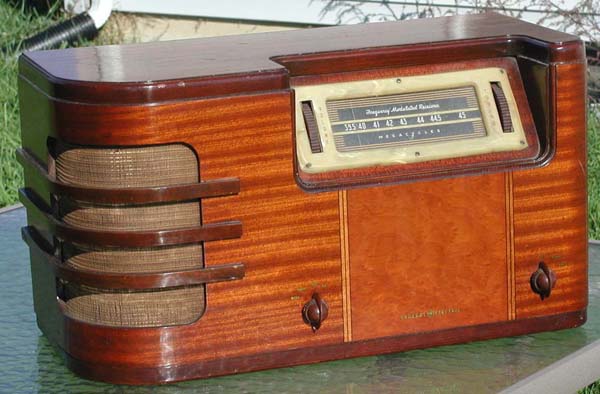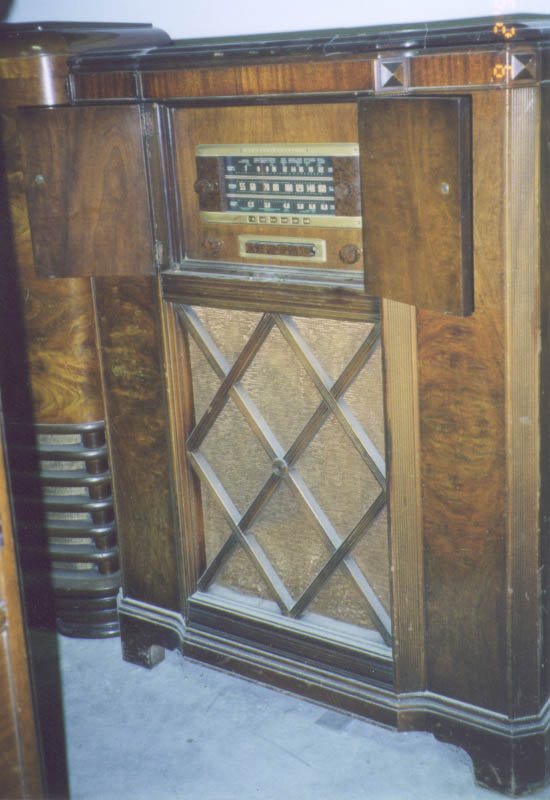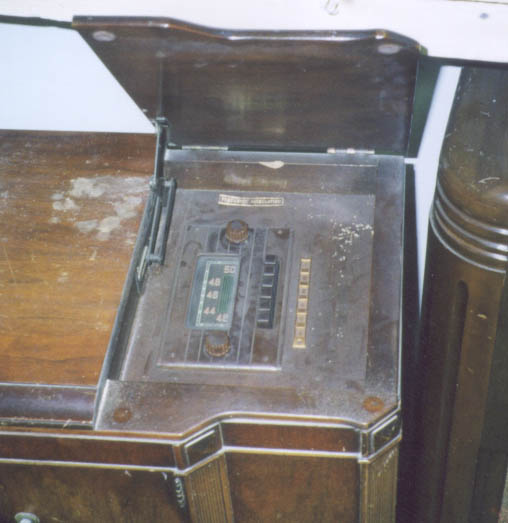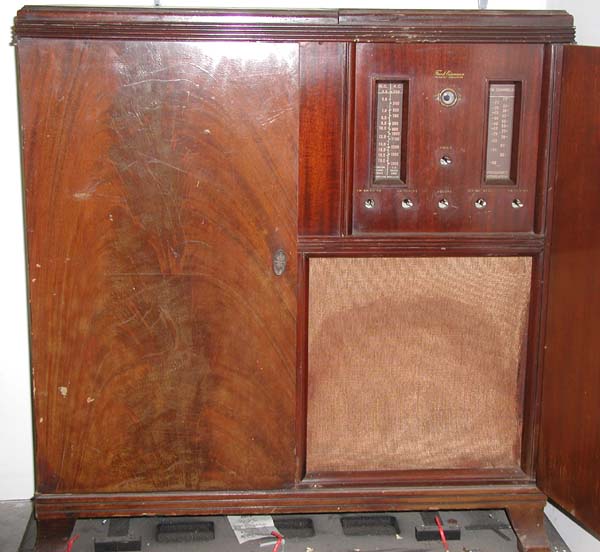Pre War FM radios
Edwin Howard Armstrong invented Frequency Modulation (FM) in 1933 in response to David Sarnoff's request to make a radio
that was "Static-Free". FM was his answer, but Sarnoff (The president of RCA) was not impressed. He didn't want
a whole new system, he wanted to make the current system of Amplitude Modulation (AM) static free. Sarnoff turned away from
Armstrong and persued the development of electronic television. Without RCA's support, Armstrong persued the advancement of FM
on his own working the bugs out and developing a broadcasting network (The Yankee Network). This was the end of Armstrong and
Sarnoff's buisness relations and friendship. In fact, it soon turned into a bitter war between the two former friends.
In 1938, Armstrong's station (W2XMN) was completed and he comissioned General-Electric to make 25 FM radios for field testing and FM broadcasting was off and running!
Radio manufacturers started jumping on the FM bandwagon in 1940 including GE, Stromberg Carlson, Meissner and a few others.
By 1942, almost all major radio manufacturers in the U.S. were making FM radios. Though, some, including Philco, were making them without an Armstrong license. RCA refused to make an FM radio untill after the war. and they developed their own circuits to avoid getting an Armstrong license.
Here is a list of FM radio models made before the U.S geared up for WWII as well as their respective Riders manual
page. This list is by no means complete as I may have missed some radios and/or radios that were not submitted to J.F. Riders Service Manuals.
There are at least 76 different chassies by 24 manufacturers listed here.
By January 1942, all consumer manufacturing came to a halt as the U.S. geared up for the war. FM broadcasting continued though the war, though
by 1944, Sarnoff managed to convince the FCC to move the FM band from the 42-50 MHZ slot to 88-108 MHZ where
it is today. This made all FM radios made up to this point obsolete!
Armstrong fought back and managed to get the 42-50 MHZ slot reinstated untill 1949 so that there would be time for the new band to become
established.
BTW, the 42-50 MHZ band was allocated to television channel 1. This is why televison channels start at 2.
After the war, the manufacturers who were licensed made radios with both the old and new FM band including Zenith, Stromberg Carlson, Magnavox and General Electric.
there were also several converters made to allow the older 42-50 MHZ only FM radios to receive the new band. a few of these worked well, others
didn't.
As for Armstrong, he continued to battle RCA over FM patents which wore him down over time.
On February 1, 1954, he comitted suicide by jumping from his 13th floor apartment. A very tragic end to the person MOST responsible for the development of radio. His wife, Marion continued to fight his battles untill she won all of them.
Edwin Howard Armstrong should be as well known as Edison or Tesla. But today hardly anyone knows who he is, or what he accomplished.
General Electric model HM-80 (1940)

This is the oldest FM radio I own. As you can see, it does not tune 42-50 mhz. Rather, it tunes 39.5-45 mhz. Things were in a state of flux at
the time this radio was made. Most FM radios this early in the game tuned about 39-44 mhz untill the FCC established the band at 42-50 mhz by
mid 1940. This one has a very interesting label just inside the back of the set.
A close-up of the label showing this set to be a test market receiver for station W47A
A look into the back of the radio
General Electric model JFM-165 (1941)


This radio has an FM tuner hidden in the top right of the cabinet. It was put there as if it was an afterthought.
GE also made this FM tuner as a seperate piece to attach to any radio or external amplifier.
Freed-Eisemann model FM-69 (1942)

Freed Radio Corp. was one of the early companies to aquire an Armstrong FM license. This particular radio has been restored but has a thermal
problem in the FM section. It will play for about 15 minutes then go silent. Probably a component in the local oscillator circuit.
It also is in dire need of knobs!
Here is a closeup of the face
More to Come



